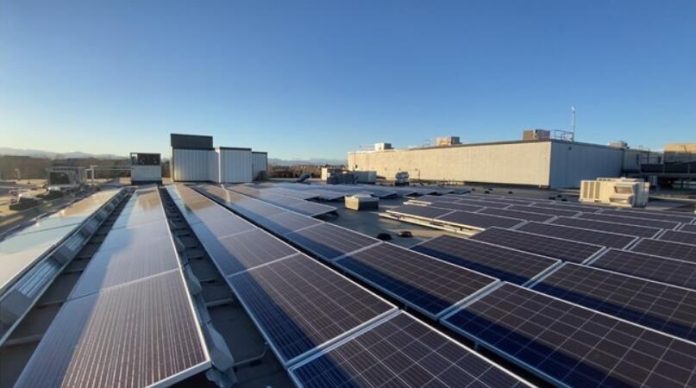Bold net zero agendas by commercial, industrial and utility counterparties has pushed the size thresholds of solar project development into a new playing field. And with new larger projects supported by state and federal incentives comes an increased premium for insurance amid an erratic environment prone to catastrophic storms.
Once considered a low-cost investment, the price to build solar assets has increased considerably. To combat rising costs due to inflation, kWh Analytics partnered with project developer Pivot Energy to provide Solar Revenue Put production insurance across the developer’s multiple distributed solar projects totaling 70 MW in six U.S. states.
The Solar Revenue Put is a credit enhancement product designed to help investors improve leverage by mitigating solar production risk. Although the 70 MW portfolio’s project financing closed in April 2022, the developer arranged a post-financing addition via the Solar Revenue Put for an extended 20-year term to enable the developer to increase the loan size helping to cover increased costs that would otherwise be covered by project equity alone.
The Solar Revenue Put was added to improve leverage from the developer’s lender group, which consists of Silicon Valley Bank, Cadence Bank, and Bank United, while Everest is the main carrier for the production coverage.
“Our partnership with kWh Analytics will be a game-changer for our portfolio of community solar assets,” said Bret Labadie, chief financial officer of Pivot Energy. “This insurance product reduces the risk of the portfolio, which enables stronger project returns, and ultimately allows us to more effectively finance more clean energy projects in the future.”
Pivot Energy’s portfolio presented the solar insurer with a new challenge: each of the 36 sites of the 70 MW portfolio had a different configuration, a different tracking system, and different associated risks. Utilizing a large unified database of operating solar assets, the team assessed the risk at the individual project level as well as a diversified portfolio to underwrite the policy, finding the best value and allowing for debt optimization.
kWh Analytics’ Solar Revenue Put is an insurance policy covering solar production to provide protection against downside risk. The policy allows asset owners to achieve more favorable financing terms via additional debt or optimized loan terms.
The additional supplemental insurance coverage protects Pivot Energy’s projects for a 20-year term. The Pivot Energy portfolio brings kWh Analytics’ total assets under management to over $4 billion.
The $190 million financing facility that Pivot Energy in April will support a multi-state portfolio of a then 90 MW distributed generation solar project portfolio comprised of 40 solar projects in six states, representing 80% community solar, and 20% commercial and industrial (C&I) projects. The portfolio includes projects located in New York, New Jersey, Illinois, Colorado, Minnesota and California.
The solar portfolio represented the first that Pivot will build, own, and operate since it was acquired by Energy Capital Partners (ECP) in June 2021. In addition to C&I power purchase agreements, clients include community solar subscriptions for commercial clients, residents, and nearly 1,200 low- to moderate-income households.
Asset data
In December 2022, kWh Analytics shared findings from its operational asset database in a solar generation index report. The study found broad underperformance in the field when compared to forward-looking performance estimates.
On average, projects constructed after 2015 have generated 7% to 13% less electricity than P50 production estimates. P50 means there is a 50% chance in any given year that production will be at least a specific amount. If an array has a P50 production level of 500 kWh, it means that on any given year there is a 50% chance that production will be at least 500 kWh.
The report concluded that as the gap between actual and expected generation grows, underperformance risk jeopardizes investor returns and the industry’s ability to achieve sustainable growth.
Under 10 years of operational data, average lifetime performance ranged from 5% to 10% below initial P50 estimates across seven major U.S. regions. The report also evaluated system performance based on project capacities and mount types and found no underperformance trends isolated to any specific group of projects.
Formed in 2012, kWh Analytics is based in San Francisco and has raised $26.8 million in equity to date. Its most recent raise in February 2022 brought in $20 million in Series B funding from Lacuna Sustainable Investments.






